Introduction
Released in 1984 by Irem, Kung-Fu Master is widely regarded as the first true beat ‘em up arcade game, laying the foundation for later classics like Double Dragon and Final Fight. Players take on the role of Thomas, a martial artist on a mission to rescue his kidnapped girlfriend, Sylvia, from the clutches of the mysterious villain, Mr. X.
With its fast-paced melee combat, multi-level tower structure, and endless waves of enemies, Kung-Fu Master introduced gameplay elements that would influence the entire beat ‘em up genre. The game was also loosely based on Bruce Lee’s 1972 film Game of Death, which featured a similar multi-tiered enemy tower concept.
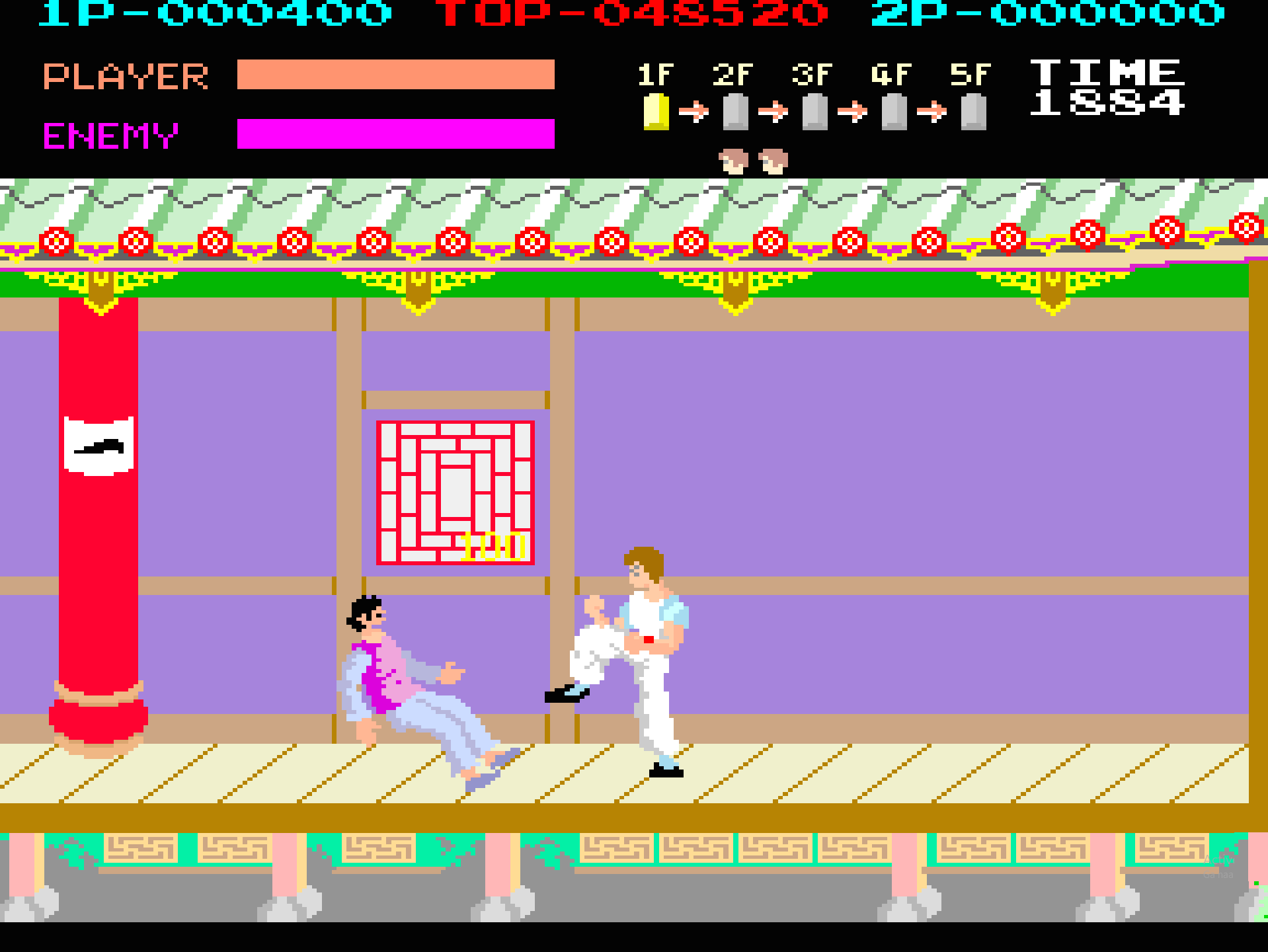
Design and Development
Developed by Irem and directed by Takashi Nishiyama, Kung-Fu Master was inspired by both martial arts cinema and early side-scrolling action games. Nishiyama would later move on to SNK, where he played a major role in creating Street Fighter and Fatal Fury.
The game was originally titled Spartan X in Japan, as it was a licensed tie-in to the Jackie Chan movie of the same name. However, the game’s storyline was entirely unrelated to the film, leading to it being renamed Kung-Fu Master in international releases.
The arcade machine ran on Irem’s M62 hardware, delivering fluid animations, responsive controls, and non-stop action, making it a standout release in 1984’s arcade scene.
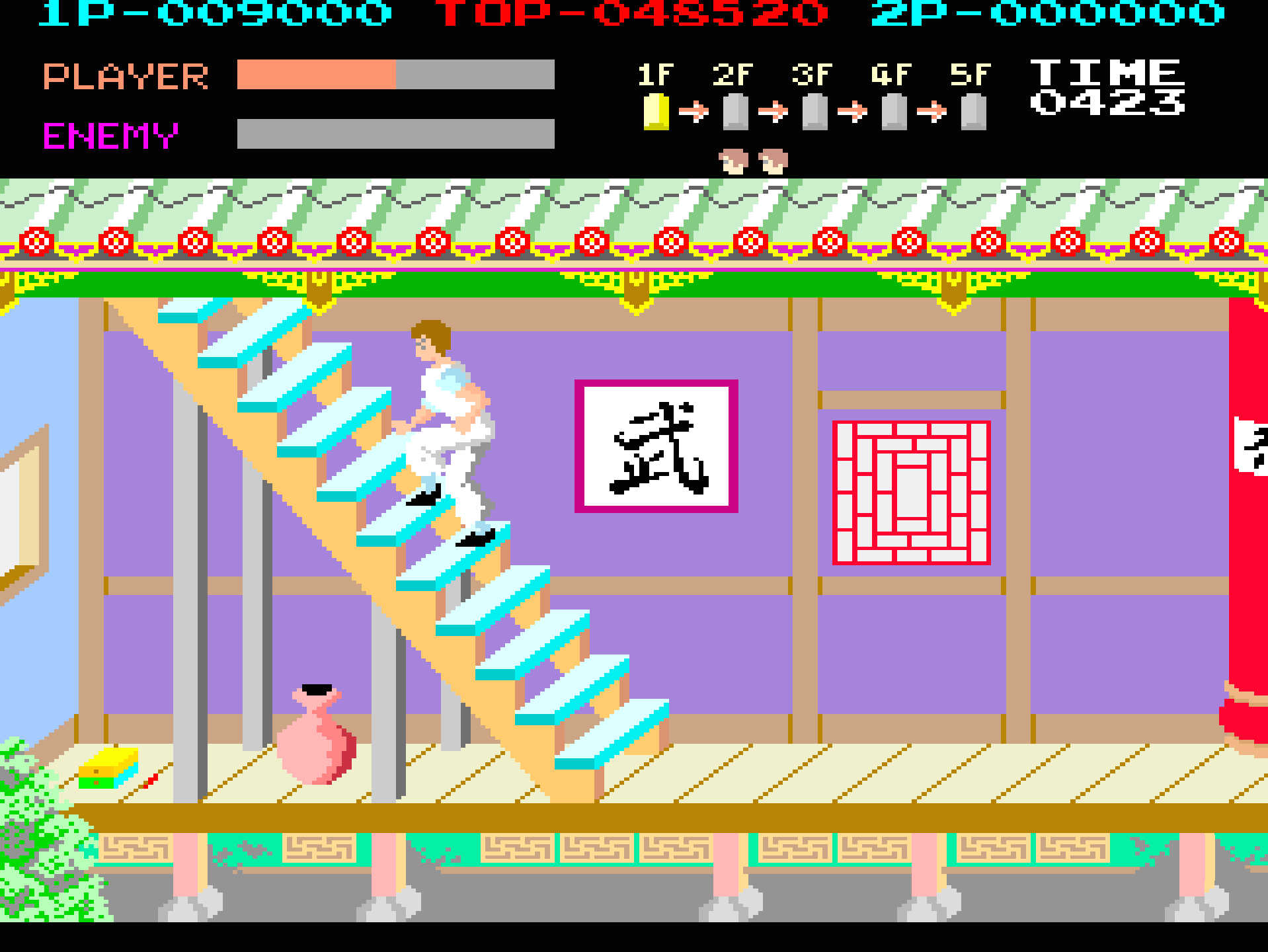
Gameplay Video
Gameplay and Mechanics
- Side-Scrolling Beat ‘Em Up – Players advance through a five-story pagoda, fighting off waves of enemies to rescue Sylvia.
- Simple But Effective Combat – Thomas can punch, kick, and perform jump kicks, each with different attack speeds and power.
- Endless Enemy Waves – Players must battle grabbing enemies, knife throwers, and martial arts masters at every step.
- Multi-Level Boss Fights – At the end of each floor, Thomas faces a stronger opponent, including stick-wielding fighters, a boomerang master, and a giant brute.
- Time-Based Challenges – Players must clear each level before the timer runs out, forcing strategic movement and fast combat.
- Dynamic Difficulty – The game’s difficulty increases each time the player completes the tower, adding replay value.
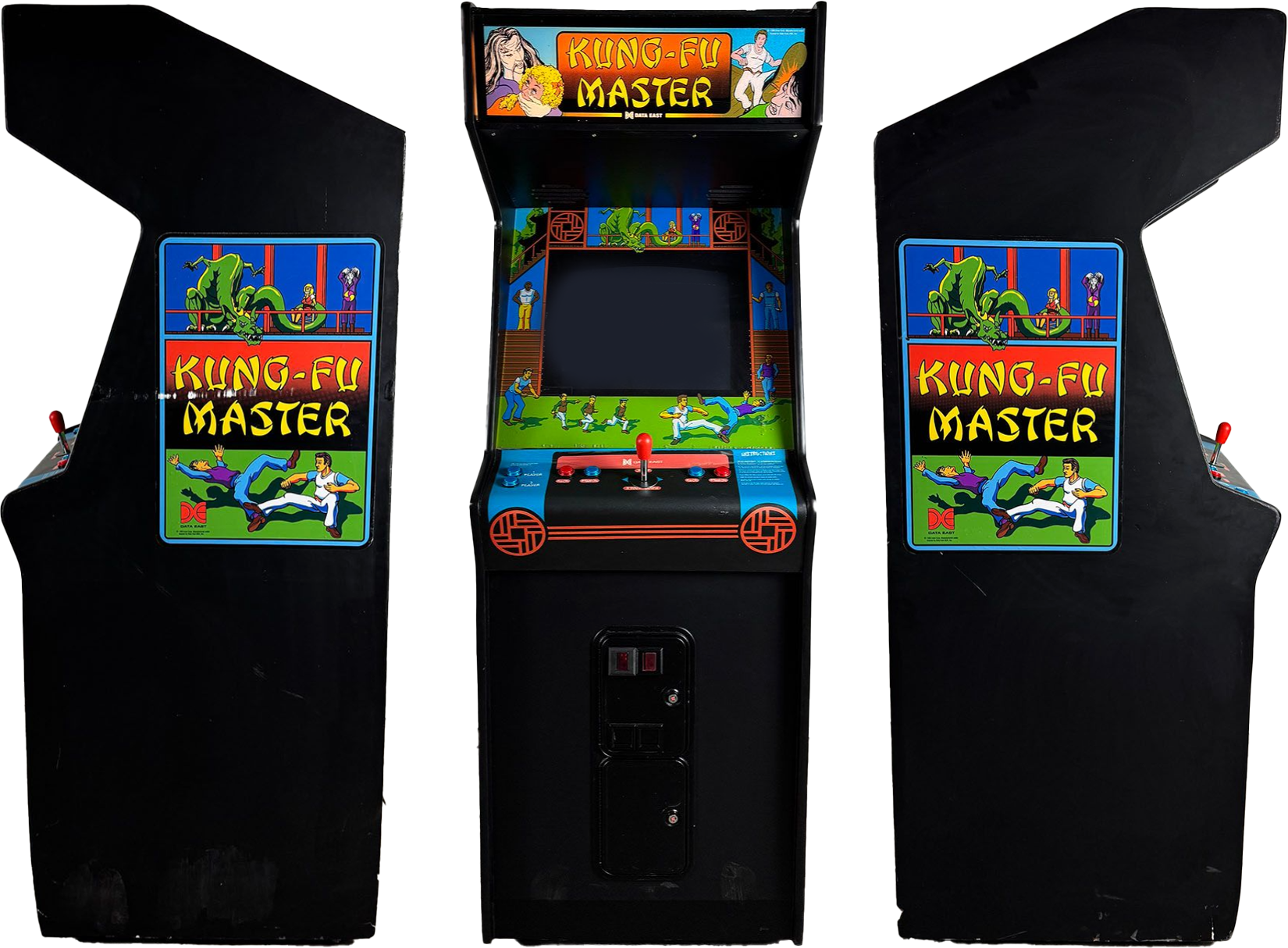
Cultural Impact and Legacy
Kung-Fu Master laid the foundation for the beat ‘em up genre, influencing countless arcade and console games. Its simple yet addictive gameplay, martial arts theme, and fast combat mechanics helped define the action side-scrolling format that later titles expanded upon.
Games like Double Dragon, Final Fight, and Streets of Rage all owe their core design elements to Kung-Fu Master, making it one of the most influential arcade titles of all time.
The game also introduced the "rescue the kidnapped girlfriend" trope, which became a staple storyline in arcade action games throughout the 1980s and 1990s.
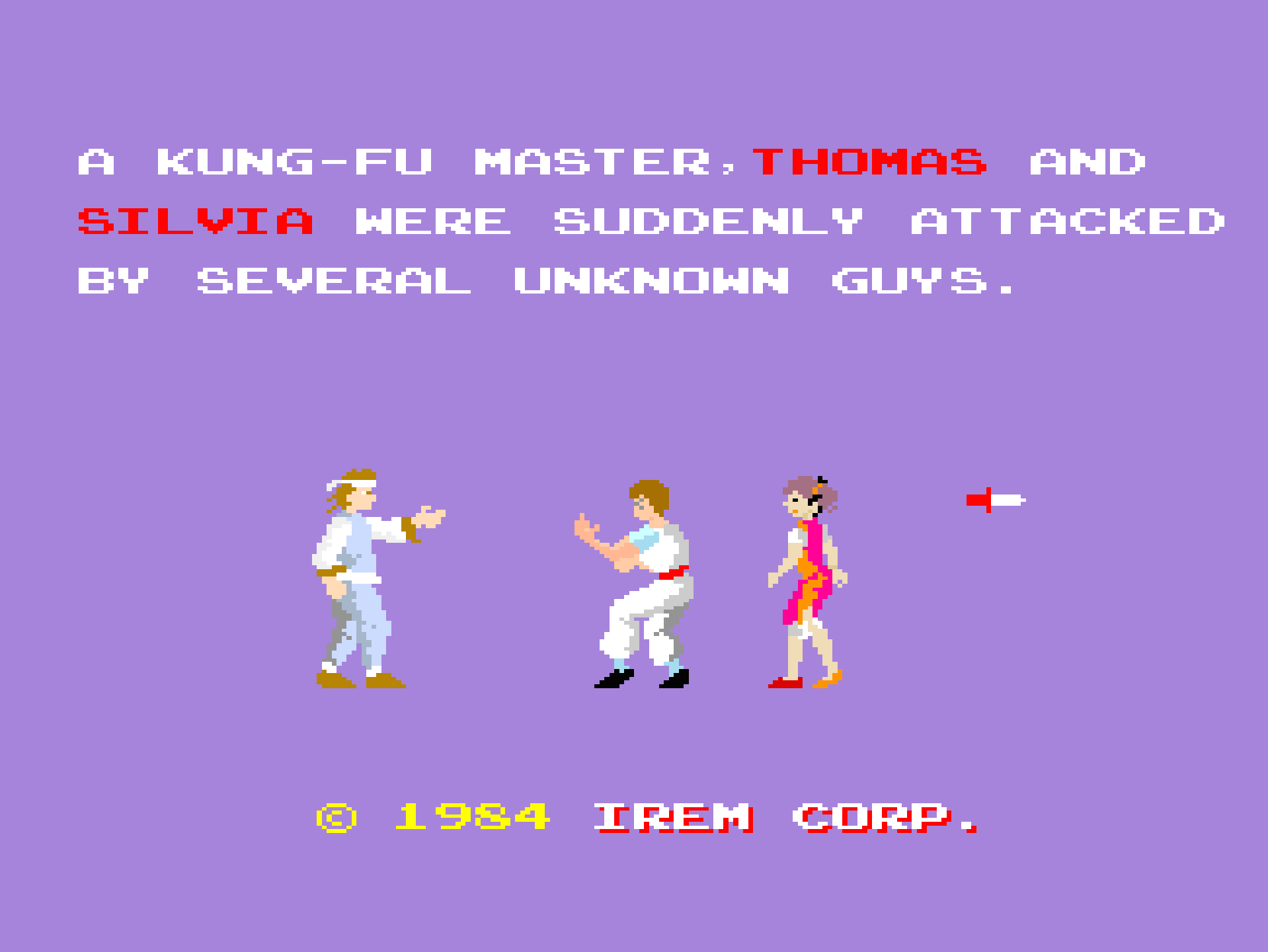
Fun Facts
- Kung-Fu Master is considered the first beat ‘em up, predating Double Dragon (1987) and setting the stage for the genre.
- The game’s Japanese title, Spartan X, was a licensed tie-in to a Jackie Chan film, despite having no relation to the movie’s plot.
- The game directly inspired the creation of Street Fighter (1987), as Takashi Nishiyama built on its one-on-one combat mechanics when developing Capcom’s fighter.
- It became one of the best-selling arcade games of its era, leading to home console ports for NES, Commodore 64, and Amstrad CPC.
- Kung-Fu Master introduced enemy AI behaviors that were later refined in future beat ‘em ups, such as grappling mechanics and dodging attacks.
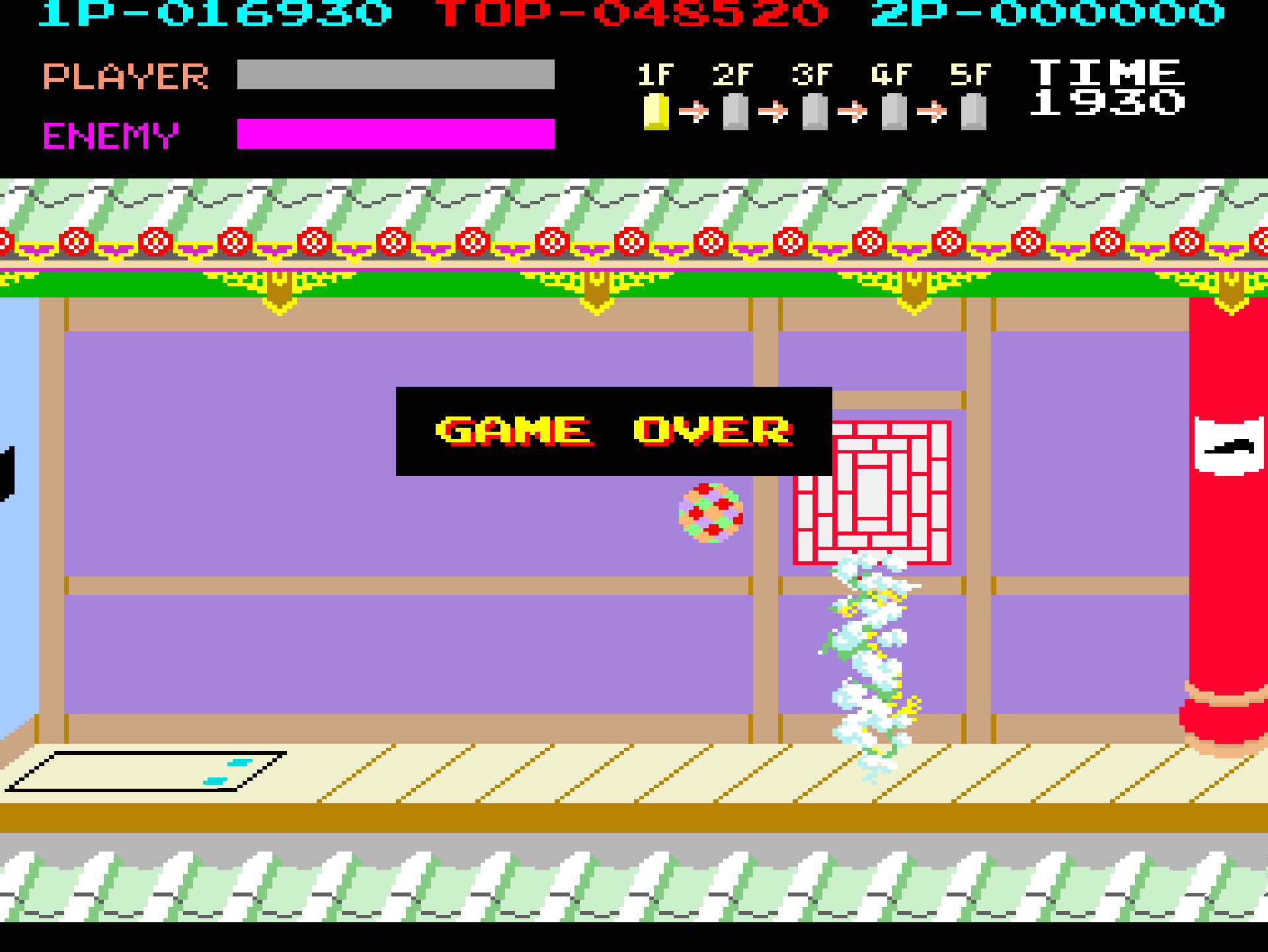
Conclusion
With its groundbreaking combat mechanics, engaging action, and lasting legacy, Kung-Fu Master (1984) remains a cornerstone of arcade history. Whether you’re a fan of classic beat ‘em ups or just love fast-paced martial arts action, this legendary arcade title is worth revisiting.
Related Pages
- Double Dragon – The game that evolved the beat ‘em up formula into a co-op experience.
- Street Fighter II– The fighter that built upon Kung-Fu Master’s combat mechanics.
- Final Fight – One of the most polished and refined beat ‘em ups of the arcade era.

